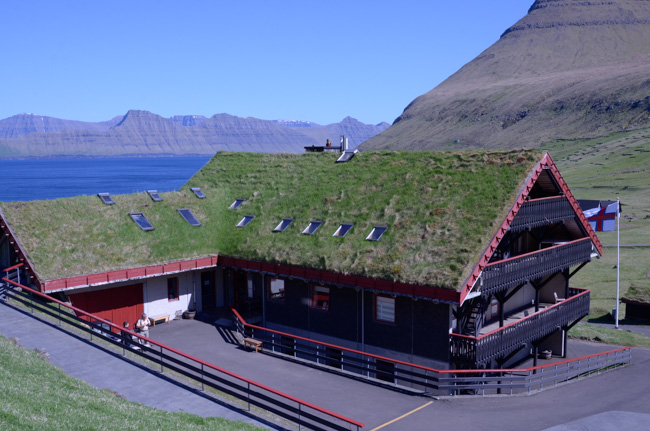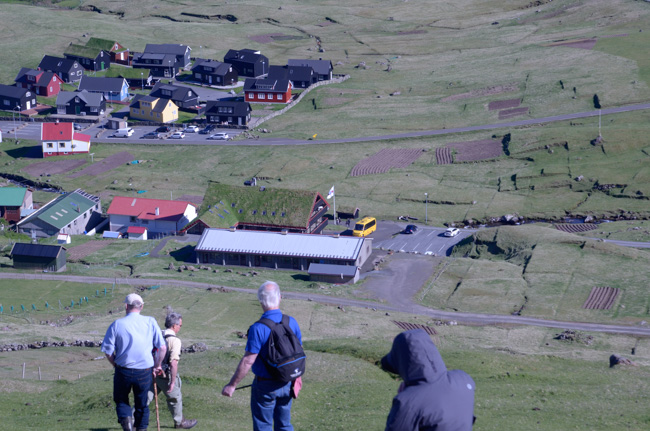After our visit to Tjørnuvík we crossed over to the island of Eysturoy where we would have lunch in the south of the island and then head north to spend our last night in the Faroe Islands. We packed a lot of sightseeing into three days!

Our lunch was another fabulous meal at the Heimablídni Garðahúsíð. The food was delicious (although I didn't care for the whale blubber, however traditional it might be) and the gardens beautiful.
Non-prostrate trees are only found in the Faroe Islands where they have been planted and tended in protected spots. It should be no surprise that the most successful introductions are from Tierra del Fuego, which has a similar maritime climate.

Our final stop was in the village of Gjógv where we would be staying in the Gjaargardur Guesthouse. It had a stunning location overlooking the village and the neighboring island of Kalsoy in the distance.
After our arrival we had the choice of two excursions: a walk through the village (Jim) and a hike up to the bird cliffs (ME).

The gorge provides both the harbor and the name for the village.

The start of our climb with the village in the background.

Nearing the summit. The fierce wind made the climb even more challenging than it might have been. At least it wasn't raining! There was only a flimsy-looking wire fence between the path and the precipitous cliff and the wind was off-shore.

Close to the top we saw a ewe and her lamb on the cliff-side of the fence. We were concerned that they would come to grief, but the local guide wasn't worried. (I saw them later on the CORRECT side of the fence, so he was justified.) Sheep do, however, fall to their deaths. One of the farmers told us the percentage they lose each year due to various causes. I don't remember the exact percentage, but it is significant -- perhaps 10% or thereabouts.

I believe that this waterfall must be higher than the one at Fosse. Notably it originates from a spring partway up the cliff rather than from the top. I briefly considered getting closer to the cliff's edge for a complete picture of the cataract, but came to my senses. Crawling on my hands and knees through the sheep droppings wasn't in the cards.

The highest point we reached gave a beautiful overlook of the neighboring island. The original plan had been to continue on, but we were mostly pooped and it was approaching time for supper.

What goes up must come down and the descent was as precipitous as the climb -- at least it wasn't right along the cliff.

I had been fascinated throughout our trip by these peculiar-looking planting areas. Jim, our Irish naturalist, told me that it is the lazy bed method of cultivation well suited to poor and compacted soils. Rather than digging out your potato bed, you simply put the seed potatoes on the grass and turn the sod over them. It is self-mulching so the need for weeding is minimal. There is more detail at the link.
Click your "back" button to return to the previous page or click for our picture album.